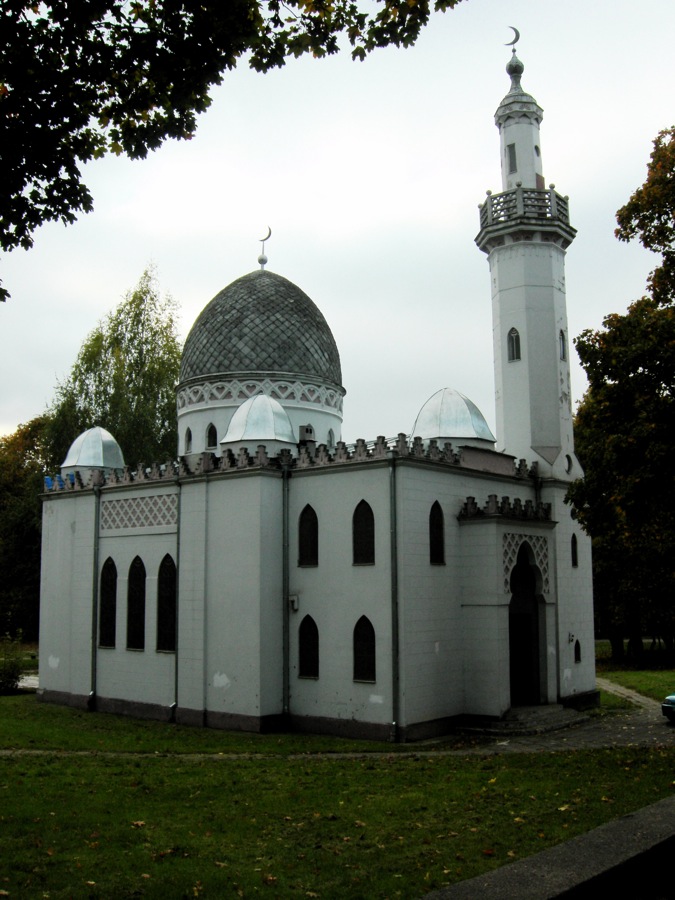Islam in Lithuania on:
[Wikipedia]
[Google]
[Amazon]

 Islam in Lithuania, unlike many other northern and western European countries, has a long history starting from 14th century. The medieval
Islam in Lithuania, unlike many other northern and western European countries, has a long history starting from 14th century. The medieval
File:Lukiskes mosque.jpg, One of the earliest Muslim mosques in Lithuania.
File:Lithuanian Tatars of Napoleonic army.JPG, Lithuanian Tatars of Napoleonic army.
Site of Lithuanian Islam community
Lithuanian mosques
{{Islam in Europe Lithuania

Grand Duchy of Lithuania
The Grand Duchy of Lithuania was a European state that existed from the 13th century to 1795, when the territory was partitioned among the Russian Empire, the Kingdom of Prussia, and the Habsburg Empire of Austria. The state was founded by Lit ...
of the Polish–Lithuanian Commonwealth
The Polish–Lithuanian Commonwealth, formally known as the Kingdom of Poland and the Grand Duchy of Lithuania, and, after 1791, as the Commonwealth of Poland, was a bi- confederal state, sometimes called a federation, of Poland and Lithuania ru ...
, stretching from Baltic to Black seas, included several Muslim lands in the south inhabited by Crimean Tatars
, flag = Flag of the Crimean Tatar people.svg
, flag_caption = Flag of Crimean Tatars
, image = Love, Peace, Traditions.jpg
, caption = Crimean Tatars in traditional clothing in front of the Khan's Palace ...
. A few Muslims migrated to ethnically Lithuanian lands, now the current Republic of Lithuania, mainly under rule of Grand Duke Vytautas
Vytautas (c. 135027 October 1430), also known as Vytautas the Great ( Lithuanian: ', be, Вітаўт, ''Vitaŭt'', pl, Witold Kiejstutowicz, ''Witold Aleksander'' or ''Witold Wielki'' Ruthenian: ''Vitovt'', Latin: ''Alexander Vitoldus'', O ...
(early 15th century). The Tatars, now referred to as Lithuanian Tatars, lost their language over time and now speak Lithuanian; however, they maintained Islam as their religion. Due to the long isolation from all the greater Islamic world, the practices of the Lithuanian Tatars differ somewhat from the rest of Sunni Muslims; they are not considered a separate sect, however, although some of the Lithuanian Tatars practice what could be called Folk Islam
In religious studies and folkloristics, folk religion, popular religion, traditional religion or vernacular religion comprises various forms and expressions of religion that are distinct from the official doctrines and practices of organized rel ...
. One anonymous Lithuanian Tatar who made Hajj to Mecca acknowledged in his work the Risȃle that the Lithuanian Tatars had unorthodox customs and rituals so that they could possibly be viewed as infidel (kafir) from the perspective of orthodox Muslims.
In Lithuania, unlike many other European societies at the time, there was religious freedom. Lithuanian Tatars settled in certain places, such as around Raižiai (in Alytus district municipality).
Much of the Lithuanian Tatar culture, mosques, graveyards and such were destroyed by the Soviet Union
The Soviet Union,. officially the Union of Soviet Socialist Republics. (USSR),. was a List of former transcontinental countries#Since 1700, transcontinental country that spanned much of Eurasia from 1922 to 1991. A flagship communist state, ...
after it annexed Lithuania. After restoration of Lithuanian independence however the government supported the promotion of Lithuanian Tatar culture among those Lithuanian tatars who lost it. Three original wooden mosques remain now (in villages of Nemėžis, Keturiasdešimt Totorių (both in Vilnius district municipality
Vilnius District Municipality ( lt, Vilniaus rajono savivaldybė) is one of 60 municipalities in Lithuania. It surrounds the capital city of Vilnius on 3 sides, while the rest borders the Trakai District Municipality.
At the 2011 Census, Poles a ...
) and Raižiai ( Alytus district municipality), typically having relatively large Muslim populations), as well as a new brick mosque built in Kaunas during the period of interwar independence of Lithuania (in the 1930s) to commemorate the anniversary of Vytautas, the duke who brought Tatars and Islam to Lithuania. That mosque is called Vytautas Didysis Mosque after the Grand Duke Vytautas
Vytautas (c. 135027 October 1430), also known as Vytautas the Great ( Lithuanian: ', be, Вітаўт, ''Vitaŭt'', pl, Witold Kiejstutowicz, ''Witold Aleksander'' or ''Witold Wielki'' Ruthenian: ''Vitovt'', Latin: ''Alexander Vitoldus'', O ...
. In the capital of Lithuania, Vilnius
Vilnius ( , ; see also other names) is the capital and largest city of Lithuania, with a population of 592,389 (according to the state register) or 625,107 (according to the municipality of Vilnius). The population of Vilnius's functional urb ...
, however, no mosque remains, as Russians destroyed the Lukiškės Mosque which was there. The Lithuanian Tatar community is trying to rebuild the mosque, but faces various problems, including lack of funds as well as certain actions by the government of Vilnius city municipality
Vilnius ( , ; see also #Etymology and other names, other names) is the capital and List of cities in Lithuania#Cities, largest city of Lithuania, with a population of 592,389 (according to the state register) or 625,107 (according to the munic ...
.
Currently, only several thousand Lithuanian Tatars remain, making up an estimated 0.1% of the country's population; however, with the restoration of Lithuanian independence, they are experiencing a kind of national revival with evidence to suggest there are several hundred non-Tartar converts to Islam.
During the time of the Soviet Union, some people from other Muslim nationalities were moved in, however many of them were atheists; as well other Muslims came as immigrants after restoration of independence, but as for now this number is very small compared to similar numbers in western Europe; therefore Lithuanian Tatars remain the core of Islam in Lithuania, supported by some Lithuanians who converted. Halal meat in the country remains difficult to obtain, with more observant Muslims slaughtering animals themselves.
Gallery
See also
* Tatars in LithuaniaReferences
External links
Site of Lithuanian Islam community
Lithuanian mosques
{{Islam in Europe Lithuania